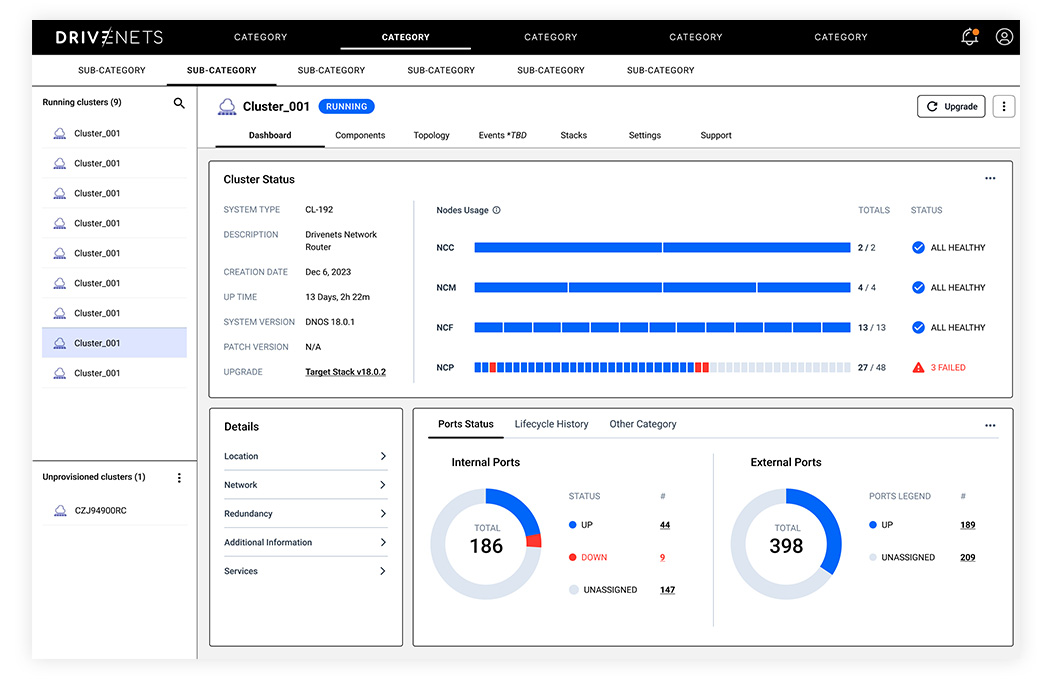CloudNets Video
Today we're going to get a few points from a first hand perspective of experience with Network Cloud....
Read moreWith advanced automation, enhanced visibility and smart insights, DNOR brings a cutting-edge orchestration experience – from network infrastructure resources to service instances.
The cloud-native, open, distributed network model introduces new challenges for operations teams. DriveNets Orchestrator (DNOR) automates the deployment, scaling and management of the DriveNets Network Cloud solution. DNOR is designed not only to resolve these challenges but also to radically transform how networks are deployed and maintained.
DNOR eliminates operational complexity by orchestrating and managing the entire Network Cloud solution like an integrated single-vendor network. Unlike traditional black box solutions, DNOR offers greater control, visibility and insights with both granular and complete views of the system – including hardware components, firmware or software containers across clusters and cluster elements. This accelerates troubleshooting, increases availability and ensures optimized network performance.




Zero-touch provisioning
Consistent single-entity management
Modular software orchestration
Short maintenance windows
High network reliability
New Node Installations and Upgrades
Scheduled Tasks
Best shared-infrastructure use of resources
Granular cluster topology visibility
Advanced fault and performance management
Standard northbound interfaces
High network availability and performance
CloudNets Video
Today we're going to get a few points from a first hand perspective of experience with Network Cloud....
Read moreBlog
The two hottest marketing terms in the network equipment space are surely “disaggregated” and “cloud”, but talk is cheap, as...
Read moreWhite Papers
This white paper explores how DNOR 2.0 brings the simplicity and visibility of cloud orchestration to DriveNets Network Cloud....
Read more